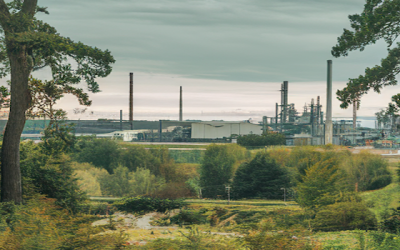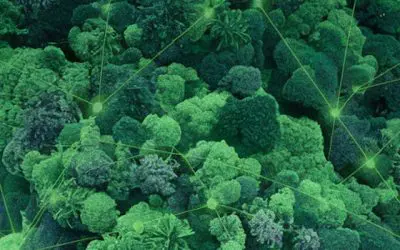I’ll be honest—when I first heard about underwater forests, my reaction was probably similar to yours: *What? That’s a thing?* But after sitting down with Lonnie Hayward, CEO of Timberwise, I quickly realized that this isn’t just a thing—it’s a multi-billion-dollar industry hiding in plain sight, or rather, beneath the water’s surface.
Turns out, when hydroelectric dams flood forests, they don’t just wipe out land—they preserve it in a strangely frozen state. Decades-old, even century-old trees stand submerged, waiting for someone with the right tech, vision, and tenacity to extract them. That’s where Timberwise comes in.
Timberwise is doing for submerged timber what the gold rush did for prospecting—except this time, it’s sustainable, profitable, and surprisingly logical. And the kicker? It could transform how we think about forestry, carbon credits, and indigenous land partnerships.
The Accidental Discovery of a Billion-Dollar Industry
Lonnie didn’t start his career looking for sunken forests. He’s got a background in forestry, oil and gas, and finance—industries that don’t immediately scream “eco-innovation.” But sometimes, opportunity finds you.
“When I first got into this, it was purely about accessing high-value species that were no longer available due to deforestation,” Lonnie told me. “Musical instrument makers, luxury furniture companies—they all wanted this wood, but the only way to get it was through the black market.”
Enter a group of engineers in Brazil, desperately looking for a better way to retrieve these submerged giants. They’d been using divers—a dangerous, inefficient, and slow method. Lonnie saw the potential, acquired the technology, and transformed it into a scalable business.
“The tech was there, but nobody had the vision to turn it into an industry,” he said. “That’s where I came in.”
How Underwater Logging Works (And Why It’s Brilliant)
If you’re picturing scuba divers with chainsaws, let’s reset that image. The Timberwise technology is designed to use specialized robotic arms that can reach more than 120 feet below the surface, cutting and retrieving trees efficiently—without disturbing the ecosystem.
In the past, illegal & irresponsible logging practices have devastated entire ecosystems. While the vast majority of terrestrial logging today is performed in an environmentally & conscientious manner, there is simply not enough wood to keep up with the housing demand. This is especially true in light of the massive losses incurred in our forests each year due to insect infestation & wildfires. Underwater harvesting will help to ease the pressure on terrestrial logging so that many of these forests can recover.
Here’s why this matters:
- **Carbon Impact** – Each underwater tree that is harvested saves one terrestrial tree in the forest, so that it can continue to sequester CO2 and produce oxygen for our planet. In fact, each cubic meter of living tree stores one ton of carbon and produces more than two tons of oxygen.
- **Economic Opportunity** – The global submerged timber market is worth an estimated **$125 billion**.
- **Indigenous Partnerships** – Many of these submerged forests are on indigenous lands. Timberwise is working directly with these communities, ensuring they get a cut of the revenue while also restoring their waterways.
“This isn’t just about making money,” Lonnie emphasized. “We’re reversing some of the environmental damage that was done decades ago, while also creating an economic engine for indigenous communities.”
Bridging Sustainability and Profitability
Sustainability has a bad habit of being framed as a tradeoff—good for the planet, bad for the bottom line. Timberwise is flipping that narrative.
Take the Kuna Indians in Panama. Their land was flooded for hydroelectric power, rendering it useless for fishing or farming. Timberwise isn’t solely about extracting trees; they’ve also created a charitable element to their company that will allow them to fund projects like tilapia farms, restoring livelihoods while creating economic opportunities.
And Lonnie has seen this shift firsthand. “When we started, sustainability was just a side benefit,” he admitted. “Now, it’s a selling point. Governments and corporations are actively looking for solutions like this—especially with new deforestation bans coming into play. Once we have an active operation, the carbon credit potential alone will no doubt be attractive to industry giants like Weyerhaeuser and West Fraser Timber.”
The Future of Underwater Logging
This industry is still in its infancy. Most hydro companies didn’t even realize the trees they flooded were still intact, let alone valuable. “We had one hydro exec ask me, ‘Wait, aren’t those trees rotted?’” Lonnie recalled. “When I showed her a sample, she couldn’t believe it. This wood is pristine—it’s been preserved underwater for decades.”
So, what’s next?
For Timberwise, it’s about scaling up—expanding into more regions, refining their tech, and unlocking even greater sustainability benefits.
For entrepreneurs, it’s a lesson in recognizing hidden value. Lonnie wasn’t a forestry startup guy. He was a corporate guy who saw an opportunity and ran with it.
And for investors, policymakers, and environmentalists, it’s a sign that innovation in sustainability doesn’t always look like wind farms and solar panels. Sometimes, it’s a high-tech logging machine pulling century-old mahogany out of a reservoir.
Final Thoughts: The Best Opportunities Are Hidden in Plain Sight
The next time you fly over a reservoir, look down. Beneath that murky surface lies an untapped economic and environmental opportunity.
And if Timberwise has anything to say about it, those trees won’t stay hidden for much longer.
Want to learn more about sustainability-driven investments and innovation? Join our mailing list and stay ahead of the curve.






0 Comments